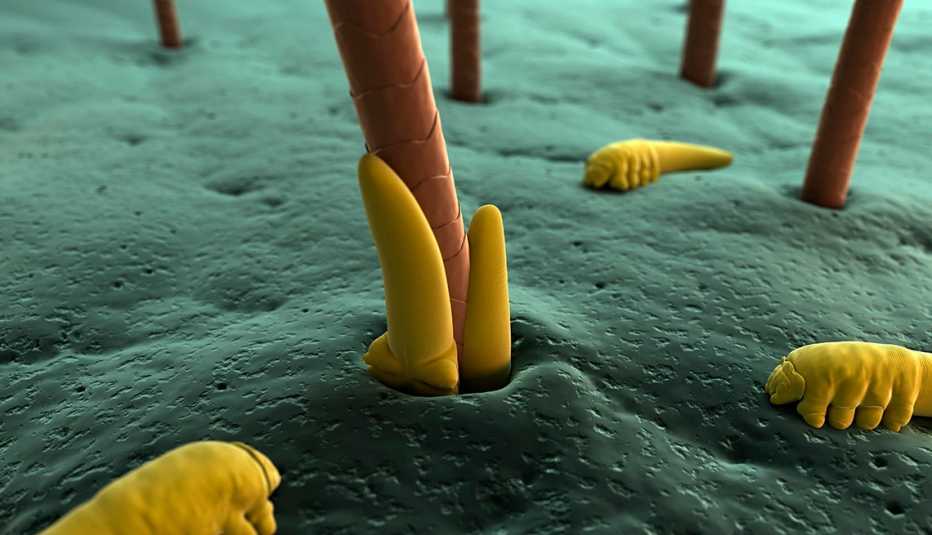AARP Hearing Center




Hygiene tip
Until you're rid of mites, ditch your eye makeup, change your towels regularly, and keep bedding and pillowcases clean by washing them in hot water and drying them in a heated dryer. Also give family members and pets the once-over to check for symptoms of an infestation.
How's this for unsettling? Right now, as you are reading these words, microscopic parasites (known as Demodex mites) are living in your eyelashes.
What the heck are they doing there? Well, these critters crave oil, which makes the edges of your eyelids prime real estate, since each edge is lined with 25 or so sebum-producing glands. These mites aren't crazy about light, so during the day they burrow deep in the eyelash follicles and snooze.
They come out at night, while we're sleeping, and have a party — mating and munching on dead skin cells. “That's why we tend to have more crusting around our eyes when we wake up,” says Julie Lam, an optometrist in Cave Creek, Arizona. When fun time is over, they crawl back into our hair follicles to lay their eggs.
Before you make a beeline for your bathroom mirror, magnifying glass in hand, there are a few things you should know. First of all, you can't see these mites. Also, and this is somewhat reassuring, we all have small numbers of them; they're part of our bodies’ normal microbiome.
"In small numbers, Demodex mites typically aren't a problem,” reassures Scheffer Tseng, M.D., a Miami-based ophthalmologist. “However, if they reproduce in large numbers, you reach a threshold.” That's when things can turn kind of, well, icky.


































































More on health
Eye Center
Expert information on vision health including cataracts, glaucoma and moreThe 10 Best Superfoods for Your Eyes
Protect your vision with these nutritious (and delicious) foods
10 Fascinating Facts About Your Eyes and How We See the World
All about night vision, optical illusions, eye color and more